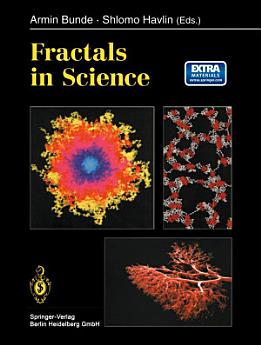Fractals in Science
Armin Bunde · Shlomo Havlin
dic 2013 · Springer
Libro electrónico
300
Páginas
reportLas calificaciones y opiniones no están verificadas. Más información
Acerca de este libro electrónico
Applying fractal geometry to science is bringing about a breakthrough in our understanding of complex systems in nature that show self-similar or self-affine features. Self-similar and self-affine processes appear everywhere in nature, in galaxies and landscapes, in earthquakes and geological cracks, in aggregates and colloids, in rough surfaces and interfaces, in glassy materials and polymers, in proteins as well as in other large molecules. Fractal structures appear also in the human body; well known examples include the lung and the vascular system. Furthermore, fractal geometry is an important tool in the analysis of phenomena as diverse as rhythms in music melodies and in the human heart beat and DNA sequences. Since the pioneering work of B.B. Mandelbrot, this interdisciplinary field has expanded very rapidly. The scientific community applying fractal concepts is very broad and ranges from astronomers, geoscientists, physicists, chemists and engineers to biologists and those engaging in medical research.
Califica este libro electrónico
Cuéntanos lo que piensas.
Información de lectura
Smartphones y tablets
Instala la app de Google Play Libros para Android y iPad/iPhone. Como se sincroniza de manera automática con tu cuenta, te permite leer en línea o sin conexión en cualquier lugar.
Laptops y computadoras
Para escuchar audiolibros adquiridos en Google Play, usa el navegador web de tu computadora.
Lectores electrónicos y otros dispositivos
Para leer en dispositivos de tinta electrónica, como los lectores de libros electrónicos Kobo, deberás descargar un archivo y transferirlo a tu dispositivo. Sigue las instrucciones detalladas que aparecen en el Centro de ayuda para transferir los archivos a lectores de libros electrónicos compatibles.






